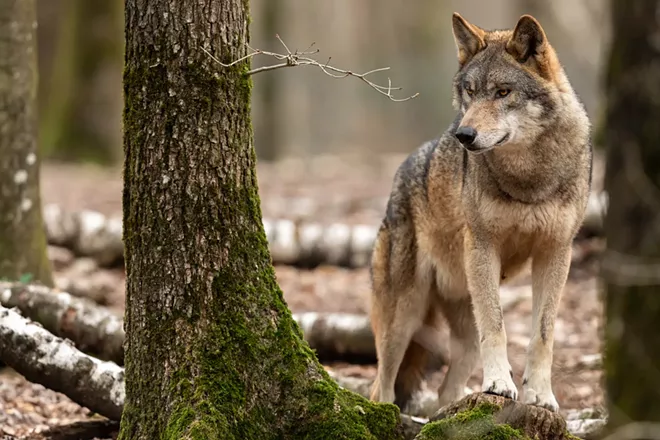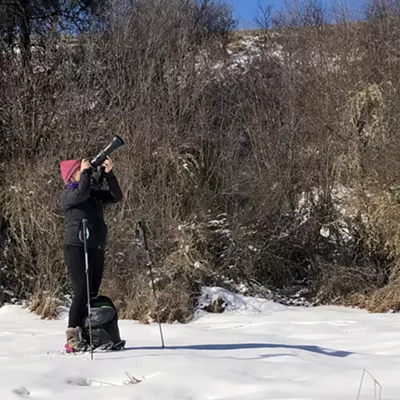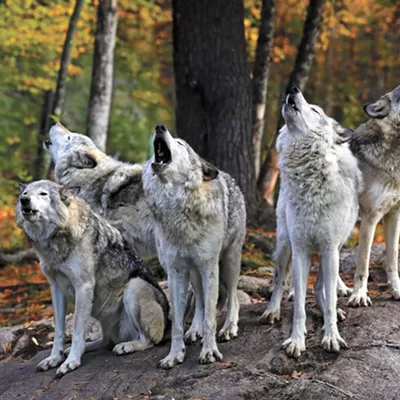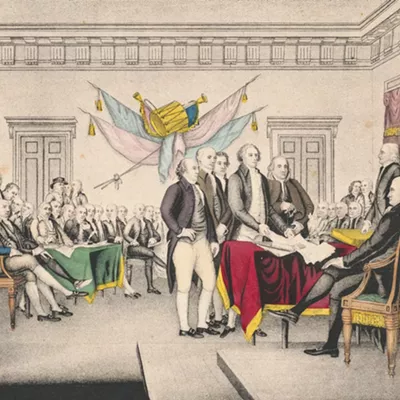Looking back across more than four decades of living in rural North Idaho, I was never afraid of the wild. I could wander freely and felt deep joy knowing that I was intimately connected to the life around me. I heard the screams of cougars at night, or saw their fresh tracks in the light of my headlamp skiing home in winter's early evening darkness from a part-time job in town. I embraced it all — even the scary parts like finding cougar tracks in the morning following my ski trail.
Now in my early 70s, I don't get out into the wild as often as I used to, but it's not only because of growing older. I find myself being much more anxious because the surrounding environment is less friendly and inviting. This isn't the fault of nature, however; it's the domination of man. Hell, I might accidentally step into a trap intended to kill wolves if I wander off the trail to get a better look at a native wildflower. Such a situation happened three times recently to owners' dogs here on public lands, including one unmarked trap laid in the middle of a popular hiking trail. According to Chip Corsi, Idaho Department of Fish and Game regional director in Coeur d'Alene, traps can be legally set only 10 feet from the edge of any trail or unpaved road, but he doesn't see this as a threat to public safety.
After more than 25 years, I feel like it's taking a giant step backwards into a disconnected relationship with nature once more. If we examine history, we might begin to understand what brought us to this point.
Back in 1995, many of us were excited about the possibility of wolves once more being in the wild and bringing the diversity of the ecosystem into integrity. Wolves had been completely wiped out some 60 years prior by humans, like everywhere in the West, largely out of fear, hate and ignorance. But that year, the U.S. Fish and Wildlife Service reintroduced gray wolves from Alberta, Canada, into Yellowstone National Park and Idaho. Despite providing core habitat, and after several years of contentious debate, Idaho wanted nothing to do with wolf management under the federal Endangered Species Act.
As an environmental journalist and public radio producer, I had been following the Nez Perce Tribe's participation in the reintroduction process for cultural and ecological reasons. Tribal leaders were hopeful for the return of the wolf, considered to be a close relative and important to them spiritually. So the Tribe stepped up to help restore this essential predator to Idaho's wild lands. Respect for coexistence with wolves led to impressive population growth of the species. This success was a stark contrast to what would happen in 2008 when Idaho assumed control. After tens of millions of dollars of the nation's taxpayer dollars were spent, Idaho's "conservation management of wolves" became an opportunity to kill. Hunting and trapping wolves led to declining numbers. I remember when a wolf hunting permit cost around $7.
Then in 2011, as a rider to an omnibus budget bill in Congress, and with no public discourse, the gray wolf was removed from Endangered Species protection in Idaho, as well as the rest of the Northern Rockies region. Since then, thousands of Idaho wolves have been killed by trappers, hunters and state-hired USDA Wildlife Services sharpshooters from aircraft. Professional hunters have killed entire packs in designated wilderness areas ostensibly to boost elk populations. Since 2017, an average of 472 wolves have been killed annually, more than a third of the yearly population; 170 of those have been in the Panhandle.
After tens of millions of dollars of the nation's taxpayer dollars were spent, Idaho's "conservation management of wolves" became an opportunity to kill.
Corsi of Idaho Fish and Game says that despite this year's drastic changes, around 250 wolves statewide and 50 in our region have been killed since last July. But the "no holds barred" scenario mandated by the Legislature doesn't end until June 30. Wolves are not an easy animal to kill, Corsi says. They can hear up to 10 miles away, which is why trapping is an easier way to kill wolves than hunting them. In Yellowstone, however, wolves have learned to trust humans, which has contributed to a 20 percent decline this past winter as they stepped out of the park into Idaho and Montana only to be killed. It was the worst winter for Yellowstone's protected wolves since 1995.
Up to 90 percent of Idaho's wolves are targeted to be killed. The Idaho Legislature has directed IDFG to eliminate 1,350 of the estimated 1,500 wolves, just shy of what would put them back on the federal Endangered Species List. This war on wolves cannot continue. We could learn a lot about being human from wolves if only given a chance. But our hatred and inhumanity toward our fellow species persists. Only the Secretary of the Interior Deb Haaland and new U.S. Fish and Wildlife director, Martha Williams, can step in and put wolves back on the Endangered Species List in Idaho and the rest of the Northern Rockies. They need to hear from you now. Your voice really does matter. ♦
Jane Fritz is a longtime local journalist in the Sandpoint area. She is currently the media director, blog writer and podcast producer for the nonprofit education organization, Idaho Mythweaver, as well as for recent independent radio documentaries for Spokane Public Radio.


















